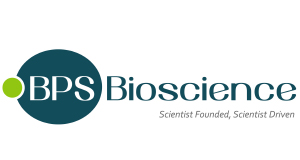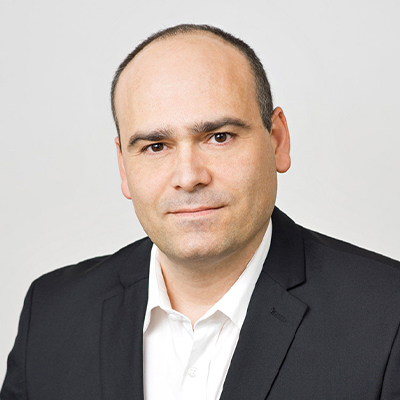FcRn: IgG Recycling HMEC-1 Cell Pool
FcRn: IgG Recycling HMEC-1 Cell Pool
SKU
BPS82163
Packaging Unit
2 vials
Manufacturer
BPS Bioscience
Availability:
loading...
Price is loading...
Products from BPS Bioscience require a minimum order value above 400€
Application: Determine profile of antibody recycling via FcRn.Screen for inhibitors of FcRn IgG recycling.
Background: Neonatal Fc receptor for IgG (FcRn) is a heterodimeric protein. FcRn consists of Fc Gamma Receptor and Transporter, encoded by the FCGRT gene, and beta-2-Microglobulin (B2M). FcRn binds to the Fc region of monomeric immunoglobulin G (IgG). It is expressed in over 25 tissue types, with high expression levels observed in the spleen and intestine. In the placenta, it transports IgGs from the mother to the fetus. FcRn contributes to effective humoral immunity by protecting IgGs from degradation, recycling them and extending their half-life in circulation. In addition to IgGs, it regulates the homeostasis of serum albumin. FcRn plays a vital role in regulating the level of albumin and IgGs in circulation by binding albumin and the Fc region of IgG at low pH (about pH 6.0) in endosomes. It then diverts them from being degraded by lysosomes and instead recycles them for release into the neutral pH (about 7.0-7.4) of the extracellular compartment. The loss of FcRn in tumor cells has been reported to play a role in cancer by increasing the breakdown of albumin into amino acids needed for tumor cells proliferation. The function of FcRn can be exploited by engineering therapeutic antibodies to increase their binding to FcRn, thereby improving their half-life and therapeutic efficacy. For example, an antibody cocktail that contains Fc mutations, and thus an extended half-life (Evusheld) has been used to treat COVID-19. There are now several other drugs in clinical using similar strategies. Further studies and drug development taking advance of FcRn properties will provide new therapeutic options.
Description: The FcRn: IgG Recycling HMEC-1 Cell Pool is a HMEC-1 cell pool expressing Fc gamma receptor and transporter (FCGRT) (NM_004107.5) and beta-2-microglobulin (B2M) (NM_004048.4), separated by a T2A self-cleaving peptide, under the control of a CMV promoter, introduced into HMEC-1 cells via lentiviral transduction. This cell pool is designed to measure the uptake and recycling of human IgG antibodies (human FcRn does not bind mouse IgG).This cell pool has been validated with Nivolumab, Rituximab, Trastuzumab, anti-PCSK9 and an anti-IL-2Ra antibody. Figure 1: Illustration of FcRn: IgG Recycling HMEC-1 Cell Pool mechanism of IgG FcRn-mediated recycling.
Figure 1: Illustration of FcRn: IgG Recycling HMEC-1 Cell Pool mechanism of IgG FcRn-mediated recycling.
Cells are incubated with an antibody (IgG) of interest in a low pH Dilution Buffer, allowing FcRn to bind to IgG. Cells are then washed, and IgG recycling can be analyzed after 24 hours
Host Cell Line: HMEC-1
Mycoplasma Testing: The cell line has been screened to confirm the absence of Mycoplasma species.
Storage Stability: Cells are shipped in dry ice and should immediately be thawed or stored in liquid nitrogen upon receipt. Do not use a -80°C freezer for long term storage. Contact technical support at support@bpsbioscience.com if the cells are not frozen in dry ice upon arrival.
Supplied As: Each vial contains >1 x 106 cells in 1 ml of 7.5% DMSO and 92.5% FBS
Warnings: Avoid freeze/thaw cycles
Biosafety Level: BSL-2
References: Grevys A, et al., 2018 Nature Communications, 9: 621.
Swiercz R, et al., 2017 Oncotarget, 8(2): 3528-3541.
Weflen A, et al., 2013 Mol Biol Cell, 24(15): 2398-2405.
Application: Determine profile of antibody recycling via FcRn.Screen for inhibitors of FcRn IgG recycling.
Background: Neonatal Fc receptor for IgG (FcRn) is a heterodimeric protein. FcRn consists of Fc Gamma Receptor and Transporter, encoded by the FCGRT gene, and beta-2-Microglobulin (B2M). FcRn binds to the Fc region of monomeric immunoglobulin G (IgG). It is expressed in over 25 tissue types, with high expression levels observed in the spleen and intestine. In the placenta, it transports IgGs from the mother to the fetus. FcRn contributes to effective humoral immunity by protecting IgGs from degradation, recycling them and extending their half-life in circulation. In addition to IgGs, it regulates the homeostasis of serum albumin. FcRn plays a vital role in regulating the level of albumin and IgGs in circulation by binding albumin and the Fc region of IgG at low pH (about pH 6.0) in endosomes. It then diverts them from being degraded by lysosomes and instead recycles them for release into the neutral pH (about 7.0-7.4) of the extracellular compartment. The loss of FcRn in tumor cells has been reported to play a role in cancer by increasing the breakdown of albumin into amino acids needed for tumor cells proliferation. The function of FcRn can be exploited by engineering therapeutic antibodies to increase their binding to FcRn, thereby improving their half-life and therapeutic efficacy. For example, an antibody cocktail that contains Fc mutations, and thus an extended half-life (Evusheld) has been used to treat COVID-19. There are now several other drugs in clinical using similar strategies. Further studies and drug development taking advance of FcRn properties will provide new therapeutic options.
Description: The FcRn: IgG Recycling HMEC-1 Cell Pool is a HMEC-1 cell pool expressing Fc gamma receptor and transporter (FCGRT) (NM_004107.5) and beta-2-microglobulin (B2M) (NM_004048.4), separated by a T2A self-cleaving peptide, under the control of a CMV promoter, introduced into HMEC-1 cells via lentiviral transduction. This cell pool is designed to measure the uptake and recycling of human IgG antibodies (human FcRn does not bind mouse IgG).This cell pool has been validated with Nivolumab, Rituximab, Trastuzumab, anti-PCSK9 and an anti-IL-2Ra antibody.
 Figure 1: Illustration of FcRn: IgG Recycling HMEC-1 Cell Pool mechanism of IgG FcRn-mediated recycling.
Figure 1: Illustration of FcRn: IgG Recycling HMEC-1 Cell Pool mechanism of IgG FcRn-mediated recycling. Cells are incubated with an antibody (IgG) of interest in a low pH Dilution Buffer, allowing FcRn to bind to IgG. Cells are then washed, and IgG recycling can be analyzed after 24 hours
Host Cell Line: HMEC-1
Mycoplasma Testing: The cell line has been screened to confirm the absence of Mycoplasma species.
Storage Stability: Cells are shipped in dry ice and should immediately be thawed or stored in liquid nitrogen upon receipt. Do not use a -80°C freezer for long term storage. Contact technical support at support@bpsbioscience.com if the cells are not frozen in dry ice upon arrival.
Supplied As: Each vial contains >1 x 106 cells in 1 ml of 7.5% DMSO and 92.5% FBS
Warnings: Avoid freeze/thaw cycles
Biosafety Level: BSL-2
References: Grevys A, et al., 2018 Nature Communications, 9: 621.
Swiercz R, et al., 2017 Oncotarget, 8(2): 3528-3541.
Weflen A, et al., 2013 Mol Biol Cell, 24(15): 2398-2405.
| SKU | BPS82163 |
|---|---|
| Manufacturer | BPS Bioscience |
| Manufacturer SKU | 82163 |
| Package Unit | 2 vials |
| Quantity Unit | PAK |
| Host | Human |
| Product information (PDF) | Download |
| MSDS (PDF) |
|

 Deutsch
Deutsch






